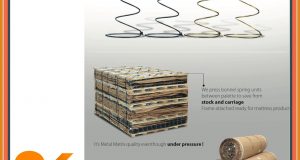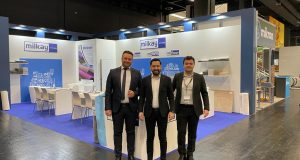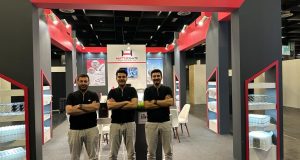The experts at the Institute have been conducting remarkable works for skin sensory and thermophysiological testing to assess just how comfortable bed linen and other textiles that come into direct contact with the ski
BÖNNIGHEIM – Hohenstein Institute carries out skin sensory and thermo-physiological testing to assess just how comfortable bed linen and other textiles that come into direct contact with the skin, such as night clothes, T-shirts, pullovers and wellness textiles, really are. Then they give them a comfort mark. These tests include measuring stiffness and the surface index. In the former, a laser beam is used to measure the angle to which a strip of fabric will bend, and this indicates the stiffness of the textile. Measuring the surface index of a textile means measuring how smooth or hairy it is. Looking at a cross-section of the textile, the number and length of the fibers standing up from the fabric are evaluated. The number of contact points is measured to provide information about the area of the textile material that is in contact with the skin. Thanks to their decades of experience, the experts at the Hohenstein Institute can give guideline figures for the ideal number of contact points for textiles. In addition to these tests, the skin sensory testing also includes measuring the wet cling index and the sorption index. These tests show, firstly, how much a textile sticks to the skin when you sweat and, secondly, how effectively and quickly sweat is absorbed by a textile and so transported away from the skin. Because the flows of both wet and dry heat from the skin play an important role in skin sensory perception, the Hohenstein Institute also carries out two thermo-physiological tests they measure water vapour resistance, used to define “breathability”, and the thermal insulation provided by the textile. Both properties are tested using the Skin Model, which is able to simulate both sweating by human skin and the dry heat that it emits. Textiles that have been tested can be awarded the Hohenstein Institute’s “Skin sensorial comfort vote” quality label. The comfort mark provides valuable information about how comfortable the textile feels to wear on the skin, and gives an objective assessment without the textile needing to be worn or used. In this way, even any princesses among consumers are bound to be impressed by both the label and the product. Which brings us back to our story about the skin sensorial comfort vote. If the good fairy had sought advice from the experts at the Hohenstein Institute, then, after carrying out their tests for mark for skin sensory comfort, they would have been able to give her the following results: the textile was too stiff. That is why the bed linen did not nestle snugly around the princess’s body. The sorption index result was also poor, because sweat was not being efficiently absorbed. Furthermore, the bed linen was not “breathable” and its thermal insulation was inadequate. If the fairy godmother had also known about the “Skin sensorial comfort vote” quality label, she would have been able to use it to assess the comfort of some different bed linen and fulfill the princess’s wish by giving her some that would completely satisfy her and allow her to have a good night’s sleep with no sweating or scratching. And the moral of the story is: with the “Skin sensorial comfort vote”, you’ll never have a bad night’s sleep and your clothes will always feel comfortable.
 SleepTech Magazine Mattress, Accessories, Machinery, Raw Materials
SleepTech Magazine Mattress, Accessories, Machinery, Raw Materials


